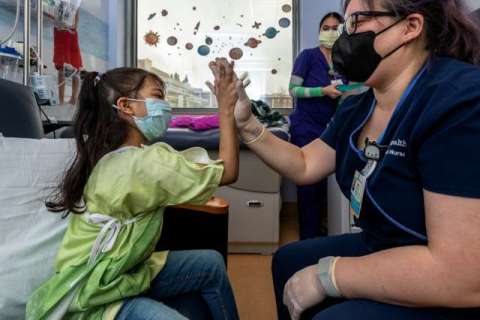Donate Blood
Be a hero. Donate blood
Your donation ensures that when blood is needed, blood is available.
A blood donor is an extraordinary person. Blood donations are an essential part of treatment for patients with cancer and other life-threatening medical conditions.By becoming a blood donor, you can make a huge contribution to critically ill patients with special transfusion needs.
What to expect when giving blood
The blood donation process is quick and easy. You can expect to:
- Check-in with the UCLA Blood & Platelet Center staff
- Fill out a Donor History Questionnaire
- Have a mini health check-up. We’ll take your blood pressure, temperature and pulse. We’ll also prick your finger to do a hemoglobin test, which measures a protein in your blood
- Sit in a comfortable chair while you donate a pint of blood. This step takes about 10 minutes
- Enjoy a snack and drink before you leave
That’s it! The entire blood donation process takes about an hour. Donating platelets will take approximately two to three hours.
What happens to your blood after you donate?
Have you ever donated blood only to wonder where it went and who it went to? We’ve all heard the phrase “donating saves lives,” but we rarely know who has survived as a result of this generous donation.
Read about the journey of a blood unit and the child it saves.

Additional information
Red blood cells
Since red blood cells carry oxygen to all parts of the body, these types of transfusions are most needed after significant blood loss due to trauma, surgery, or to treat anemia. A single red blood cell donation can be made every 8 weeks; a double RBC donation, collected by apheresis, can be made every 16 weeks.
Eligibility for a double red cell donation has special requirements, including higher hemoglobin levels. Type O donors are in high demand because they are “universal” red cell donors. Their RBCs can be used for transfusion for patients with any blood type.
Whole blood
After its collection, whole blood is separated into its component parts – red blood cells, plasma, platelets and cryoprecipitated AHF (antihemophilic factor) – and used in separate transfusions to help save lives.